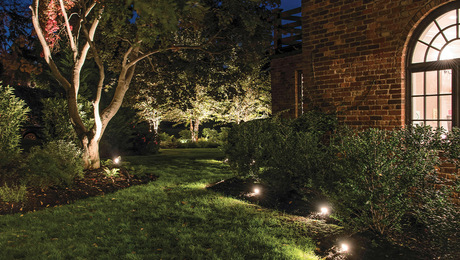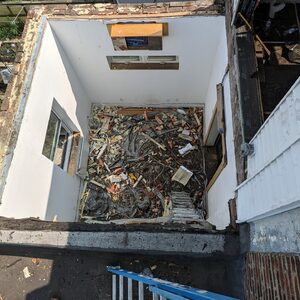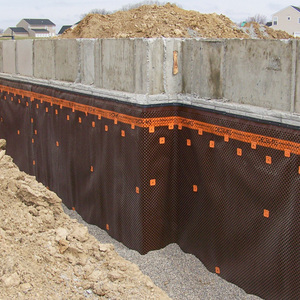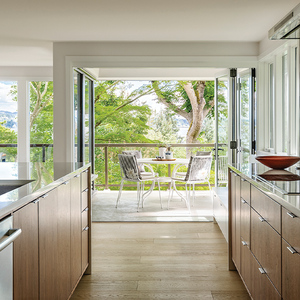I recently got bids on HVAC from two local contractors and I’m puzzled as to the difference between how the unit were sized. The Lennox guy bid a 110,000 BTU 92% furnace with a 5 ton 13 seer A/C. The Trane guy bid a 80,000 BTU 90% furnace with a 3 1/2 ton 14 seer A/C.
The home is around 1500 sq ft of living space with a fairly open floor plan. Ceilings are 9″ throughout with coffers in two rooms that rise to 11′. Sidewalls are 2×6 and it will be well insulated. Floor is slab on grade.
I’m puzzled as to the difference in the sizing. Both guys have been in business for many years and I’m pretty sure they know what they are doing. I suspicion that the Lennox guy is maybe overbuilding without really calculating the need. Or for that matter the Trane guy may be underbuilding to get the lower price.
So, what do you guys think? What are some good questions that I can fire at them to find out where I really need to go?
thanks
Silas



















Replies
I'm not a heat n air guy but I'd just ask each why they chose what they did and let them know what the other chose. It may simply be the differences of the units and it might be what you said but I'd lean on a more innocent answer. Heck the one may just realize he undersized your unit and appreciate you pointing it out.
I have built commercial buildings ware the specks stated the HVAC installers design and specks were to be approved by the building owners mechanical Eng. They did not agree and in the meeting it simply came down to the building was on the boarder line and one averaged up and the other averaged down.
I would look at what materials and installation techniques each is proposing. Sealed and installed correctly smaller will be less costly to install and operate. Not done correctly operation will be very costly. Have each show you jobs they are currently doing and get names of customers and builders each uses for references. Call each.
The most efficient equipment you can afford is a wise choice if you can do that. Obtain model numbers of the equipment bid and go to each manufacturers web site and see how each manufacturer ranks the bid equipment. Is it upper class stuff or lower class equipment.
Do the foot work now you have to live with it for a long time
The better your insulation value for the home as an overall unit, The smaller the HVAC system needs to be.
Cooling systems need to be just right because when oversized, cool but don't run long enough to dehumidify.
Ask them to show you a Manual J calculation.
I would not be surprised if neither has done one.
If you want to try it yourself you can get a limit time use software at http://www.hvac-calc.com
" Sidewalls are 2x6 and it will be well insulated. Floor is slab on grade."
The are a number of other bits of information needed to get an true answer. But based on my 1600 SQ FT house I would say that both of them are oversized.
.
A-holes. Hey every group has to have one. And I have been elected to be the one. I should make that my tagline.
The are a number of other bits of information needed to get an true answer. But based on my 1600 SQ FT house I would say that both of them are oversized.
I've just gotten a proposal for my 3200 ft sq house and have done my own calculations (whatever that's worth) and both of those systems sound oversized for my house and I'm in a similar climate to the OP.
I wonder if the HVAC companies have some units on hand they'd like to move.
http://grantlogan.net
.......nature abhors a vacuum cleaner.....
Are you in Achorage or Dallas?
Central Missouri actually. We get Anchorage weather and we get Dallas weather too!
This a new house? Location? Sounds like lots of windows, maybe. Or a cold winter climate. 100,000 Btuh for a house that size sounds way big. 30 years ago, I sized a heating system at 38,000 Btuh for 1,800 sqft ... 2x6, but no R-21 available then or low E glass. Moderately cold winter climate.
Tend to agree w/ some of the other comments. Innocent questions will likely reveal a lot ... either an innocent mistake or someone not doing his best to serve you.
Like the one guy pointed out ... on the fence and one goes to the next larger and the other goes the next smaller. You can appreciate and respect both points of view ... one doesn't want you grousing at him during a cold snap and the other wants you to be efficient and economical 98% of the time and hope that 2%, you'll live with and not see very often.
Maybe the heating was chosen to follow the cooling load?? Meeting cooling load may be more important (sizing wise). The cooling load depends on major elements like window orientation; the cooling load should account for that type of thing.
Arbitrary oversizing is irresponsible and lazy. Just because they've been in business for years don't mean squat, really. Do they both have SOLID reputations or are their clients indifferent or ignorant of the quality of their service? It's amazing how guys can be in the business a long time and not know much about what they are doing. Rules of thumb and fast and loose is their mode of operation. Until you know this is their mode, you can't disrespect them, though.
Scrutinize them a bit ... follow your intuition.
One thing to keep in mind is that furnaces and AC units only come in certain sizes, with about 30% difference between sizes by a particular manufacturer. So if the calcs show you need 75K BTU and the manufacturer sells units of 70K and 110K, the dealer will have to spec the 110K unit.
Did either one do a load calculation? Too big is just as bad as too small. How old is the house and how "tight" is it.
Do you have old drafty windows or new tight ones?
How's your insulation?
Which way does the house face (where is the southern exposure)?
Are there alot of windows on the southern side?
Are there skylights?
All these things figure into a properly sized system.
Something I failed to mention earlier was that some better units a two staged. This kind of gives you the best of all worlds. When calling for cooling the lower stage kicks on. This is less electric being used and more humidity being pulled out of the home. When it gets real hot the upper stage kicks in and keeps the home cool. If the unit happens to be oversized you arn't being penalized as bad. Again do your legwork now and check both contractors out well.
Good information. To answer some of your questions, the house is new construction and will be well insulated. No skylights but quite a few windows some of which would naturally face south. The house is in central Missouri (high humidity and extreme temperatures both winter and summer but mostly don't last too long).
thanks for all the advice. I think I just need to ask lots of questions to both contractors and possibly get another bid to see what it looks like.
Thanks
Silas
'Would naturally face south' ... why/how is that natural (it is to me, but I'm wondering why it is to you).
Are the south facing windows protected by e.g. an eave from the high midday summer sun ... or do you know? Makes a BIG difference in the neat heat solar gain.
West and east glass are big solar loads per sqft of glass, too, so that makes a big difference. If they haven't included these kinds of details, they are shoot'n from the hip and you should request that they don't do this. It's pretty standard in the industry, but if you want good sizing, they should be willing to give you the service.
this is worth just what you paid for it. i live basicly same area ,wichita ks. my first thought is 4 ton,80k furnace,basing that on what i put in rentals,but you've said new const,insulated well,1 floor.
i would guess that a 3 ton ac would cool you,i always oversize a little,so here we are at the 3.5 ton. furnace's i would throw a 100btu in 80% ,so your 80k 90% is right there in that area.
they say that around here you should be able to stay cool when it's around 98 out,gets to 105 and the air can't keep up,same with furnace once in awhile when it gets really cold it should struggle,that way the 0ther 97% of the time your running as efficent as possible.
if you find a hvac guy that runs calcs here in the midwest let me know,i can't find one they all just shoot from the hip.larry
if a man speaks in the forest,and there's not a woman to hear him,is he still wrong?
Are the units the only difference?
Forget the units for a moment ... the best, biggest unit won't perform if the ductwork is poor. Formed metal ducts are generally better than flex ducts.
You might ask to see a recent job; check their attention to detail.
As for the calculations ... ask them their assumptions - and compare them to your expectations. Will you really be happy setting the thermostat at 80? Or will you try for 68?
right .... JUST SAY NO TO FLEXDUCT!!!!!!!!
Ask the contractor if he uses flex often ... dump him if he does or if he even thinks it's OK to do it. They do that a lot around here ... flex everywhere. It's like grey duct tape ... it simply doesn't work. There is a time and place for everything; flex should be kept to a bare minimum ... only when necessary!!
Assumed thermostat setpoint for cooling might tell part of the story ... personally under 74 and it's too low. But each have their personal needs, etc.
Oversizing is required to recover from a setback stat, too. If you 'set up' your stat while at work to e.g. 90 deg and get home ... you may need capacity to recover in a reasonable time frame ... although a prog. stat will take care of it for you ... so you don't have to oversize too much.
Oversizing is required to recover from a setback stat, too. If you 'set up' your stat while at work to e.g. 90 deg and get home ... you may need capacity to recover in a reasonable time frame ... although a prog. stat will take care of it for you ... so you don't have to oversize too much.
Pffffft.
Setbacks only work if they are reasonable, and a 10* difference is much easier to overcome in heating ~vs~ cooling.
Spend the money on a thermostat with adaptive learning, and it will know when to turn on the equipment to reach the new setpoint from the setback... that way it will be at the new setpoint at the desired time instead of starting to recover at the desired time.
pfft??
I've had limited experience w/ adaptive learning in residential apps. I had one and it cycled my furnace on ... AND off multiple times at 2:30 in the morning ... go figure. I'm a little skeptical w/ that control. I know it's possible, I just didn't have good experience with it in my own house. Now I consider it a black box in my stat ... so tend not to trust it ... and bypass it. I just adjust the start time based on current seasonal trends. I know, I shouldn't be like that, but I've not learned otherwise, yet.
Get yourself a top shelf White Rodgers or Honeywell product. I'm sure the premium Aprilaire, Carrier, etc stats do a fine job too.
Not the stuff at the big box stores.
The Honeywell VisionPro IAQ stat is an excellent product.
Load calculation?
Proper duct design or low bid residential cap-n-tap with a bunch of flex?
Will the ducts be sealed or not?
Duct in the attic or in the slab?
Central return or individual room returns?
Variable speed?
Two stage furnace?
R22 or R410-A?
Propely brazed connections with a nitrogen purge and a micron gauge to determine actual vacuum levels, or just blow and go?
Charge the AC right with a psychrometer, digital thermometer and gauges, or just crack the valves and add gas until it feels cold?
Anyone develop a set of HVAC specifications to ensure comparable bids? Lots of places to cut corners that will deliver a poor system at the price you are willing to pay... but it will still heat or cool.
Poor duct design and poor installation will cost you a lot in terms of operating costs and shortened equipment life.